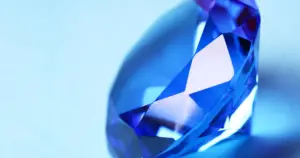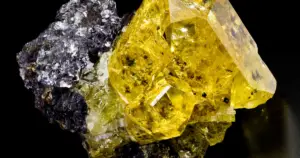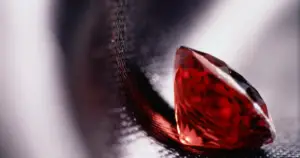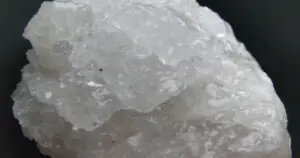Spodumene Meaning: Healing Properties, Benefits and Uses

Spodumene, a pyroxene mineral made of the lithium-aluminium inosilicate LiAl (SiO3)2, is a source of lithium. It appears as prismatic crystals that range in colour from colourless to yellowish, purple, or lilac kunzite, as well as yellowish-green or emerald-green hiddenite. Single crystals measuring 14.3 m (47 ft) in length have been found in South Dakota’s Black Hills.
The monoclinic system governs the crystal structure of the naturally occurring low-temperature form of -spodumene, and the tetragonal system governs the high-temperature form. At temperatures more than 900 °C, -spodumene transforms into -spodumene. Usually, the primary axis of crystals is strongly striated. Triangle-shaped marks are frequently etched and pitted onto crystal faces. Semi-precious gemstone spodumene is prized for its stunning translucent variants.
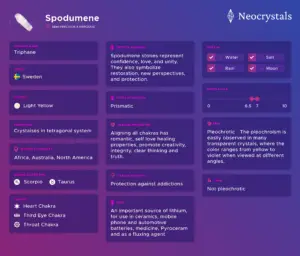
Table of Contents
What is Spodumene?
Spodumene is challenging to facet because it has a flawless cleavage and splintery fracture is extremely pleochroic and changes colour according to the angle of sight. It crystallises into crystals that are pink, violet, green, yellow, white, grey, colourless, and brownish. In direct sunshine, all forms deteriorate. Spodumene or Triphane, also known as clear or yellow kunzite, are normally colourless or light yellow crystals. However, some clearer specimens do justify their use as gems and healing stones, and some healers and crystal practitioners regard the clear, white or grey crystals as having an even higher spiritual vibration than Kunzite.
They are rarely used in faceted form, and the majority are thought to be non-gem grade. Crystals made of triphane are used for purging and repairing. They cleanse environments, eliminate toxins and negative energy from the aura and emotional body, and bring back vitality, optimism, and a sense of direction.
How to Identify a Spodumene?
Spodumene manifests as prismatic crystals that range in colour from colourless to yellowish, purple, or lilac kunzite, as well as yellowish-green or emerald-green hiddenite. Strong pleochroism characterises spodumene. Many transparent crystals exhibit pleochroism, which may be easily seen since the hue changes depending on the angle of view from yellow to violet. Due to pleochroism, Pink Kunzite frequently displays a richer pink tint on crystal terminations.
The crystals of spodumene can grow to be very large. The 42-foot (12.8 metres) tall, well-crystallized giant is the largest single crystal ever discovered. Even the transparent gem forms can occur as enormous, water-clear gemmy crystals that require two hands to hold. Spodumene is seldom found on a matrix since it may be easily extracted from the host rocks. Matrix specimens are extremely rare and in high demand.
Spodumene readily changes into clay and other minerals, most frequently feldspar and mica. Sometimes, only a little portion of a crystal can be changed, resulting in unusual and intriguing specimens.
Spodumene Cuts
Spodumene is a reasonably abundant mineral, but most of its typical forms are unappealing. However, its two distinct transparent colour variations, Kunzite (pink), and Hiddenite (green) are highly prized as jewels and have striking colours. Spodumene is seldom found on a matrix since it may be easily extracted from the host rocks. Matrix specimens are extremely rare and in high demand. Spodumene readily changes into clay and other minerals, most frequently feldspar and mica. Spodumene has a Mohs hardness rating of 6.5-7 and a refractive index of 1.65 – 1.68.
Spodumene Shapes
Spodumene crystals, despite their potential for spectacular size, are quite sensitive due to their ideal cleavage and part characteristics. Spodumene has a monoclinic crystal structure and is easily changed into other minerals and even mud. The crystals of spodumene can grow to be very large. The 42-foot (12.8 metres) tall, well-crystallized giant is the largest single crystal ever discovered. Spodumene is also employed as a gemstone for jewellery and other displays of art because of its flawless cleavage and variety of colours.
The crystal system of spodumene is monoclinic. This indicates that while none of the axes is parallel to one another, two of them are (at an angle of 90° each), while the third is not (at an angle of 110°). This system’s unit cell is shaped like a crooked rectangular prism. Almost a cube but not nearly a rectangle
Where is Spodumene Found?
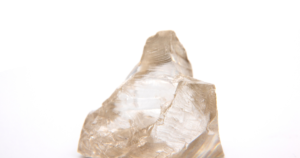
The Democratic Republic of the Congo, Afghanistan, Australia, Brazil, Madagascar (see mining), Pakistan, Québec in Canada, North Carolina, and California in the United States are just a few of the places where Spodumenen is sourced.
There are numerous significant Spodumene sites in the U.S. Outstanding Kunzite is found in the Pala District of San Diego County, California, which is also the location of the discovery of this gem variety. The Pala Chief Mine, the Oceanview Mine (particularly the “Big Kahuna Pocket” of 2009–2010), the Elizabeth R. Mine, the Vanderberg Mine, the Katerina Mine, and the San Pedro Mine are a few notable claims in Pala. The Beebe Hole Mine near Jacumba is another kunzite locality in San Diego County. In Alexander County, North Carolina, Hiddenite and Stony Point are well-known towns.
Spodumene Stone Meaning
The name Spodumene, which refers to the original opaque, ashy grey minerals presently used only in industry, is derived from the Greek spodumenos, which means “burnt to ash.” Spodumene is a lithium aluminium silicate mineral that is frequently discovered in pegmatite veins. Spodumene is used as a lithium ore and processed into various grades for use in ceramics, glass, batteries, steel, fluxing agents, and medicine in its naturally opaque form.
Spodumene Meanings in Ancient Lore and History
The first occurrence of spodumene was documented in 1800 for the type site of Utö, Södermanland, Sweden. Jose Bonifacio de Andrada e Silva, a Brazilian naturalist, made the discovery. Since 2018, mining operations have been taking place in the central DRC region of Manono, Tanganyika Province, which is home to the world’s largest lithium spodumene hard rock deposit. The name relates to the opaque grey colour of the stone when it is processed and is derived from the Greek word “spodumenos” meaning burnt to ashes. Lithium is extracted from Spodumene to use in ceramics, mobile phone and car batteries and anti-anxiety medications.
Spodumene Crystal Properties
Spodumene stones stand for assurance, affection, and harmony. They also stand for protection, renewal, and restoration. The two unique transparent types, Kunzite (pink) and Hiddenite (green), are highly prized as jewels and have striking colours. Hiddenite is significantly rarer than Kunzite and is very valuable, particularly the varieties with deeper green hues. The emerald green spodümen form of hiddenite is chromium-coloured to resemble emerald.
Not all green spodumene has chromium tinting, which usually has a lighter colour and is visible. Kunzite is a vibrant gemstone with a range of spodumene of manganese colours and a trace quantity of trace colour that ranges from pink to lilac. The hue of certain (not all) kunzite used as gemstones is enhanced by heating. To enhance colour, it is also commonly exposed to radiation. On the other hand, Triphane is a yellow variant of Spodumene.
Spodumene Healing Properties

The benefits of spiritual insight and purification are shared by the colourless spodumene and other white gemstones. Being a pink gem, kunzite has romantic, self-love, and heart-healing properties. Crystals made of triphane are used for purging and repairing. They cleanse environments, eliminate toxins and negative energy from the aura and emotional body, and bring back vitality, optimism, and a sense of direction.
Spodumene might be a big assist in maintaining our motivation so we can confidently finish a task. Its revitalising vitality aligns with all of the chakras and might help us get rid of stale, outdated energies.
Spodumene Metaphysical Properties
- The stone of true, sensuous, unconditional love is called spodumene. Spodumene is very cleansing; it will remove emotional barriers and unleash love on all levels. Any barriers to love can be removed with spodumene.
- Spodumene is a shield that can fend off mental assault.
- Spodumene is a wonderful meditation aid that is very relaxing, focuses, and gently raises vibration to the utmost wisdom.
- Spodumene gives you the mental and physical freedom of a child.
- Spodumene may also aid in your ability to accept and let go of upsetting memories or anxieties from the past. The stone can restore your sense of purpose and optimism from there. The emotional mending brought on by Spodumene mostly focuses on instilling a newfound zest for life in the user.
- Spodumene enables people to sort through negative memories that could otherwise cause horrific energies to take precedence over otherwise positive ones in those who are stuck in the past or healing from traumatic recollections.
- Positive energy can be completely cleansed using kunzite. You are left with an environment that you feel is safe and sound for fostering your own emotional and spiritual growth when it swoops in and cleans the house, making sure the cobwebs of mistrust and negative memories are wiped away.
Spodumene Benefits
- Spodumene has an oppressive force that one feels powerless to resist, whether it is internal or external. Spodumene is useful. The gem is suggested by crystal healers as protection against power-snatching addictions and manipulative persons.
- People who want to have more emotional and creative space in their lives may find that spodumene, which assists people in protecting themselves against harmful energies, is beneficial. Because of its constant presence and security, it will offer you, carrying this gem enables you to take advantage of all of its potential and advantages.
- Heart and circulation disorders can be treated using spodumene.
- Spodumene aids in the reduction of stress and diseases linked to stress or anxiety. Mood fluctuations may be stabilised with spodumene.
- The endocrine system may be stimulated by spodumene.
- Lung conditions can be helped with spodumene.
Spodumene Benefits Spirituality
- Spodumene crystal has a unique capacity to align all of the main Chakras in less than 24 hours, making it a very beneficial stone for people seeking to deepen their spiritual comfort.
- The meditative effects of spodumene are very dependent on the style of meditation you are performing. Many will be delighted to learn that it specifically aids in addressing insecurities or negative energies that appear to be invading their mind space, but you must not anticipate that the stone will carry out all the work by itself.
- Spodumene revives hope to give one a sense of direction. brings in new life and fresh energy. It can aid in erasing painful memories and any anxieties related to the past.
- This stone aids in helping you see your errors so that you can grow from them and improve going forward. a helpful stone for beating addiction.
Spodumene & Feng Shui
“Feng Shui” resembles some sort of magnetic field in the environment. Since gemstones were made thousands of years ago and are buried underground, we can refer to them as “Energy Stones” since they carry both the power of nature and the energy of the cosmos. One can open up and modify luck by putting a gemstone and the right element (such as metal, wood, water, fire, and earth) together. It aids in enhancing one’s finances, relationships, profession, and general health.
Kunzite excels in bringing a cold soothing touch to hot heads and elevated emotions. Kunzite will tempt you to come out of your shell if you tend to fall into emotional shutdown mode. Soft energy is abundant in self-compassion and unwavering love.
Allow the strong vibrations of Kunzite to seep right in and rip that box right open if you have trouble fostering meaningful connections, feel like your trust has been shot, or have your heart locked away in a container that is firmly bound. Kunzite, which is a delicate shade of pink and as sweet as can be, encourages tolerance, willingness, being open to all chances that come your way, developing greater empathy, and feeling free and uninhibited in your expression. All of this is accomplished without letting you disregard your boundaries. While boundaries are crucial, they shouldn’t enclose you, as Kunzite is aware.
Spodumene Birthstone
Spodumene is not a traditional birthstone, but the yellow variant has characteristics that make it a suitable gift for people born between June 21 and July 21. Anyone who uses this yellow stone will benefit from its ability to bring clarity and awareness. The soothing energy of Kunzite can intervene to help those fiery Scorpios get back on track because it is passionate and persistent. Scorpios are extremely endowed with virtues such as intense loyalty, stoicism, and an unmatched streak of independence.
The harsher edges of the Scorpio star sign can be softened with kunzite’s assistance. Kunzite gently guides Scorpios into a space where they can control those waves of tremendous emotions without feeling as though they are drowning. The Kunzite will also aid in mending any frayed relationships with others.
Taurus also enjoys wonderful benefits from the Kunzite stone’s flux. Taureans are noted for their determination and stoicism, and just like with other signs, Kunzite, which is a mineral associated with the Scorpio star sign, keeps Taureans softer than their typical stubborn temperament allows. Taureans have a lavish love of luxury and comfort, and the Kunzite crystal pulls this thread out of the world of things and pinning it down in the emotional sense gives Taureans every chance to live a rich, warm, and complete existence.
Spodumene Chakras
- A deep sense of serenity and a connection to the Divine is made possible by using spodumene to enter deep stages of meditation.
- The Third Eye, Throat, and Heart Chakras receive energy from Spodumene’s concentration on the Crown Chakra. Spodumene has incredible potency since it activates each of the body’s seven chakras, enabling users to achieve complete inner harmony.
- it is extremely helpful for people who want to improve the flow throughout all of their chakras. By boosting the vibrational levels of the many subtle bodies, holding spodumene aids in clearing out negativity. using high vibe Spodumene while meditation to clear your mind and give you a fresh viewpoint on any circumstance.
- Additionally encouraging creativity, spodumene simultaneously aligns all the Chakras. Kunzite connects the heart chakra. The heart chakra is the seat of our abilities to give and receive in this world as well as to trust and love. When the heart chakra is obstructed, we may become emotionally closed off and unresponsive. If we can get rid of that obstacle, lovely energy will start to flow and we will be able to freely offer and receive love without worrying about getting caught up in unfavourable consequences.
- Kunzite also has a connection to the head chakra, which serves as both a portal and a wellspring of spirituality for us. We set ourselves up to be a ready vessels for all the magic, divine light, and wisdom the world has to offer to us when our hearts and crown chakras are open.
What are the Uses of Spodumene?
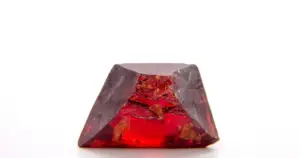
Spodumene is useful for completing tasks when motivation wanes, especially for people who routinely take on new projects only to lose interest when they become challenging or grow bored with them. Use triphane as a clearing crystal for the house to renew its energies, whether you want to clear out the clutter, do some spring cleaning, or get rid of old memories. Spodumene that is transparent or white is used in offices to remove confusion and promote honesty. Additionally, it rekindles the spirit of someone who departed under difficult circumstances.
Triphane offers protection from negative or unwelcome energy. If being with others all the time gets to you, carry something or wear something to make some emotional distance. Spodumene in Gray eliminates ambient fog and deflects radiation and microwaves from the auric field, and yellow Spodumene guards against purposeful dominance or control, whether through manipulation or bullying.
Caring for Spodumene
When to Cleanse Spodumene
Rings and bracelets are not preferred over spodumene jewellery like pendants or earrings. Adding safeguards can make the gem safer. Additionally, pendants and earrings are best at reflecting light, making them ideal for showcasing glitter!
Unfortunately, extended exposure to heat or sunshine will cause the majority of spodumene stones to lose colour. Store them in cold, dark areas and only use them for evening wear.
The best way to clean spodumene is to combine warm water and mild soap, put a soft toothbrush into the solution, and gently scrape the stone. After rinsing, dry the stone with a microfiber cloth or leave it to dry naturally.
How to Recharge Your Spodumene
It’s crucial to keep Kunzite stone cleansed and charged, like with other healing stones, so it can merrily hum along and go to work removing those old blocks. Kunzite is a delicate, sensitive stone that dislikes being washed vigorously. Make sure to clean your Kunzite with warm, soapy water—not hot—and a very gentle brush or towel. Every two weeks or so, run it underwater to assist release any built-up energy and maintain your stone bathed in the light of supreme power and strength.
Place your Kunzite stone under a full moon to charge it up and let the feminine energy work its magic filling your Kunzite stone with ripe cosmic energy. Try to avoid exposing your Kunzite to direct sunlight, which could cause the colour to fade. You can also bury Kunzite in a pot of nutrient-rich soil and let the earthly joy wash over it if you don’t want to wait for the full moon.
Spodumene Activation Process
in pegmatites rich in lithium, and spodumene minerals. Hot magma that is now igneous pegmatite rocks first rose toward the surface of the planet. As the lava progressively cools, it may develop fissures, pockets, and gas bubbles. Water containing minerals enters into those bare areas. Over time, the water evaporates and the minerals that are left behind crystallise. When water contains silica, lithium, aluminium, and sodium, spodumene is produced. It changes to kunzite or hiddenite, respectively, if manganese or chromium are also present.
How much is Spodumene worth?
The majority of spodumene gemstones are reasonably priced. Hiddenite, the most expensive spodumene, typically costs $100 a carat for faceted stones. The following mineral, kunzite, has a wider variety of pricing. Pink Kunzite gemstones typically cost between $5 and $10 per carat for milder shades and between $15 and $30 for strong shades. Lilac to deep lavender are more expensive possibilities, costing $50–$70 per carat, although kunzites over 10 carats might cost $150 per carat or more.
Does Spodumene make a good jewelry stone?
Spodumene occasionally appears as translucent crystals in soft pink, purple, green, and yellow hues. Collectors cherish the gemstones made from these after they have been cut. However, due to spodumene’s flawless cleavage, their application in jewellery is restricted to items that will only see minor misuse. Spodumene is a delicate stone that should only be used in rings and other jewellery that won’t be subjected to impact and abrasion due to its immaculate cleavage. Some gemologists refer to it as a “collector gem.”Outside of its variants, spodumene is rarely treated, except for the occasional heating to intensify colour.
But kunzite is frequently heated, subjected to covert radiation, or both. This process is used by jewellers to enhance the colour of kunzite or get rid of unfavourable overtones. Irradiation frequently converts pink kunzite into colourless spodumene or green kunzite into colourless spodumene.
Spodumene Real vs Fake
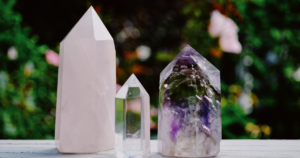
Crystal can be identified as real or fake by Thickness and gravity. The following are the crystal characteristics of spodumene:
- Hardness in Mohs: 6.5-7
- White, grey, pink, purple, yellow, green, orange, and blue are the only colours mentioned.
- Monoclinic crystal structure
- Vitreous (glass-like) lustre; frequently pearly on cleavages
- Opacity: from transparent to translucent; There are certain opaque mineral specimens (not utilised for jewels).
- 1.65-1.68 Refractive index
Spodumene Crystal Summary
| Name of Crystal | Spodumene |
| Precious | Yes |
| Semi Precious | Yes |
| Other Names | Triphane |
| Origin(s) | Sweden |
| Color(s) | Light yellow |
| Formation | Crystaises in tetragonal system |
| Majorly Found at | Afganistan |
| Zodiac Suited for | Scorpio, Taurus |
| Chakra | Eye,throat and heart |
| Crystal Meaning | Burnt to ashes |
| Types of Crystal | Prismatic crystal |
| Healing Properties | Aligning all chakras has romantic, self love healing properties |
| Health Benefits | Protection against addictions |
| Uses | Useful for completing tasks |
| Goes in Water? | yes |
| Goes in Salt Water? | yes |
| Goes in Rain Water? | yes |
| Goes in Moon Water? | yes |
| Moh’s Scale | 6.5-7 |
| Real | Pleochrotic |
| Fake | Not pleochrotic |
FAQs
What is Spodumene used for?
Spodumene is also utilised as a gemstone, and the names of the mineral’s colour varieties are used in this context. Yellow spodumene is known as triphane, green spodumene as hiddenite, and pink to purple spodumene as kunzite.
How is Spodumene formed?
Hot magma that is now igneous pegmatite rocks first rose toward the surface of the planet. As the lava progressively cools, it may develop fissures, pockets, and gas bubbles.
Water containing minerals enters into those bare areas. Over time, the water evaporates and the minerals that are left behind crystallise. When water contains silica, lithium, aluminium, and sodium, spodumene is produced. It changes to kunzite or hiddenite, respectively, if manganese or chromium are also present.
Where should I put Spodumene?
Any colour of spodumene gem should be kept out of direct sunlight.
How do you cleanse Spodumene?
The best way to clean spodumene is to combine warm water and mild soap, put a soft toothbrush into the solution, and gently scrape the stone. After rinsing, dry the stone with a microfiber cloth or leave it to dry naturally.
Is Spodumene rare?
The most frequent types of spodumene are generally drab and uninspiring, despite being a reasonably widespread mineral. However, its two distinct transparent colour variations, Kunzite (pink), and Hiddenite (green) are highly prized as jewels and have striking colours.
How strong is Spodumene?
Spodumene is extremely challenging to cut since it has excellent cleavage in both directions. When making jewellery, one must take this into account as well. When tightening prongs, extreme caution must be used because the direction of cleavage is right on the girdle.
How much is Spodumene worth?
It is highly valuable and rarely yields stones larger than two carats. typically cost between $5 and $10 per carat.
How do you identify Spodumene?
Spodumene can be identified by its properties.
- Prismic in crystal habit, typically flattened and elongated, striated parallel to 100, and frequently enormous
- Color- White, grey, pink to violet, light green, emerald green, and other colours that aren’t coloured
- Streak- White
- Lustre- Dull, Vitreous Cleavage
- Diaphaneity- transparency and translucency
- Hardness- 6.5 – 7
- System Crystal- Monoclinic
